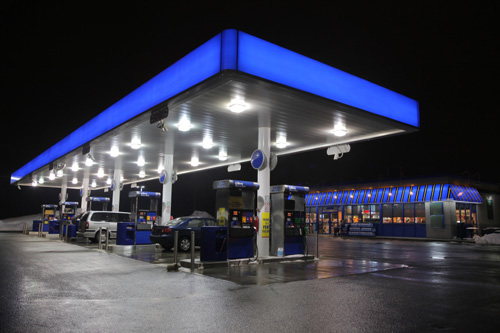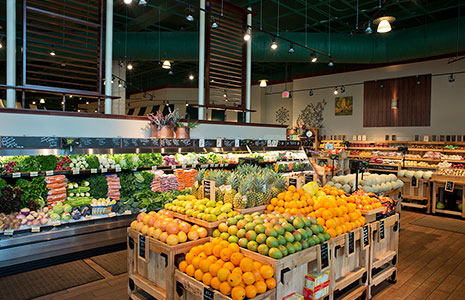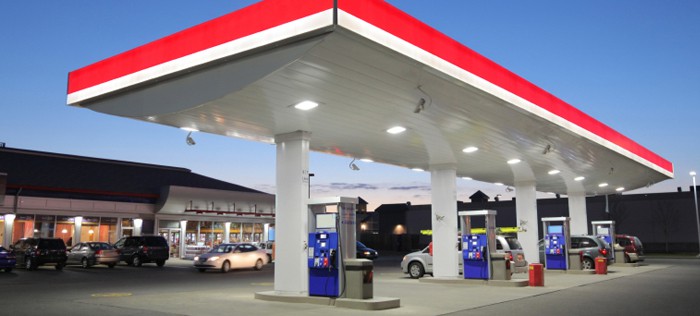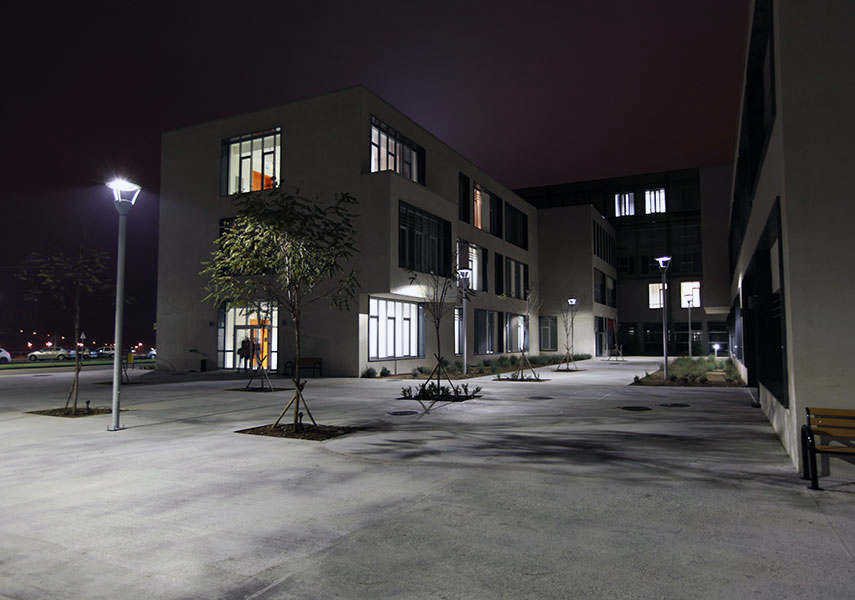In spring 2008, the Better Day BP in Racine, Wisconsin was the first gas station to have an all-LED exterior. Since then, many gas stations have gone the same route, but it’s important to acknowledge the first! Tom Tousis, owner of the gas station, wanted to save money on energy costs, but wanted an attractive station, so he chose to install 56 LED fixtures.
Continue readingRetailer Saves $260k with LEDs

Many retail businesses are looking for places to cut back on costs and improve their bottom line. Some businesses shut off some of their lights during the day and rely on sunlight to illuminate the building. Other businesses have become a little stricter on what temperature their thermostat is set on. Although we believe natural light is an excellent solution it isn’t right for everyone. Turning up the thermostat can make customers uncomfortable and less likely to shop. By making the switch to LED lighting, businesses can save money on both lighting and air conditioning costs without the adverse effects of inconsistent natural light and warmer store temperatures. Because LEDs don’t produce heat, buildings stay cooler. They also consume less power than traditional lighting.
According to the U.S. Department of Energy, 42% of an average retailers’ electricity bill is spent on lighting. If retail businesses would install LED lighting, they could save $6,400 – $8,000 each year per 10,000 square feet. In Philadelphia, Braxton’s Animal Works, a family-based pet supply store, replaced their incandescent and fluorescent lamps with LEDs. Their average electricity bills were $1,735 each month, and $761 of that was spent on lighting. With the new LED lamps, lighting costs are only $100.56 each month! They are expecting to save $8,772 each year and $260,631 over the bulbs’ 80,000-hour lifetimes.
Chestnut Hill Supermarket in Newton, Massachusetts also swapped their incandescent and fluorescent lamps for LEDs. They have seen 50-65% reduction in energy consumption, not to mention the money they are saving on replacement and maintenance costs. Chestnut Hill Supermarket was excited to learn their new LED lamps would last 10 years. Their old lamps only lasted 8-18 months.
If all retail businesses traded their old lighting for LEDs, they could save a combined total of $6.6 million each year. They would also eliminate enough CO2 emissions to equal seven million cars. Over a 30-year time period, they could save a total of $200 billion in electricity and reduce carbon emissions by 1.3 billion tons. An action as small as exchanging an old light bulb for an LED lamp can have a huge impact on a retail business’ pocket and their carbon footprint.
Gas Stations Look More Inviting with LED Lighting
Having to stop at a gas station in the middle of the night can make people cringe. The last place you want to refuel at 2 AM is at a dark, gloomy-looking station. Some gas stations have already begun to solve this problem by replacing their fluorescent and metal halide lamps with LEDs. The brighter lights make stations look safer and more inviting. Besides, if gas stations are going to have their lights on all night, wouldn’t they want the most efficient lighting available?
BetaLED’s webpage lists project briefs from seven LED installations at gas stations across the United States. All LED installations showed a considerable amount of energy savings along with owner and customer satisfaction. Owners of Thorntons Inc. in Edgewood, Kentucky, are saving 62% in energy costs and seeing a 30% reduction of carbon emissions when they replaced their 320-watt metal halide lamps with LEDs. Eric Zoph, Thorntons’ vice president of construction and environmental concerns, was incredibly pleased with the results. “One of the biggest problems faced by owners is how to maintain light levels and make the facility feel inviting without wasting a lot of energy,” Zoph said. “These LED luminaires solve that problem.”
Black Diamond Vista Chevron in Concord, California, also replaced their area, canopy, and security lamps with LEDs. The gas station was originally planning to replace their high-intensity discharge (HID) lamps with 250-watt metal halide lamps, but BetaLED’s products changed their minds. They are seeing a 64% savings on energy costs with the LED lighting. Steve Welge, president of California-based Fillner Construction, is impressed with the optical control of LED lighting. The new fixtures reduce light pollution and are Dark Sky and IDA approved. Welge also said the new lighting allows the gas station to be seen up to four miles away!
We are predicting that both gas stations are seeing an increase in customers and profit after the LED lighting installation. People are more likely to pull into a clean, brightly lit place at night than a dim, dusty gas station. We are hopeful that more gas stations will see the company and customer benefits of LED lighting and make the switch.
LED Fixtures Saving Cities Thousands Annually
Parking garages are some of the most wasteful structures when it comes to energy. Most parking garage light fixtures are lit 24 hours a day, 7 days a week, 365 days a year, consuming over 100 watts of power per fixture. Cities around the world are replacing their parking garage fixtures garages with LED fixtures, including the City of Raleigh in North Carolina.
Raleigh was the first city to participate in Cree’s LED City program, and they replaced 141 120-watt high pressure sodium fixtures in their parking garage with 70-watt LED fixtures. About half of the fixtures were equipped with a photocell sensor that turned the lights off for 12 hours during the day. According to the study, Raleigh is producing only 128 kilowatt-hours of electricity per day, and 46,720 kilowatt-hours per year. Their electricity savings totaled $2,803 annually.
Raleigh also saved $3,325 per year on maintenance costs. LED parking garage fixtures only need to be changed every 5 – 22 years, rather than every few months, depending on the lifetime of the fixture. Also, the inside of the fixtures do not have to be cleaned on a regular basis because they are manufactured to keep insects, dirt, and moisture out of the fixture.
Two hundred customers of the parking garage were surveyed before and after the LED replacement. After the retrofit, the surveys revealed both men and women felt safer in the parking structure, the quality of light was better, and the overall opinion of the garage was most positive. People also thought the parking garage was cleaner and easier to maneuver through.
According to the study, LED parking garage fixtures are 75% more efficient than those used in current parking garages. Payback time has been seen in as little as few months, or in the case of Raleigh, a few years. More cities have seen the energy savings and customer benefits from the LED retrofit in Raleigh and have begun the change themselves.





